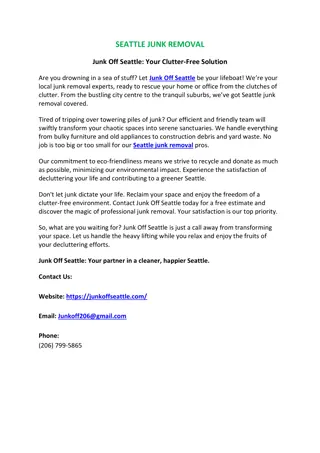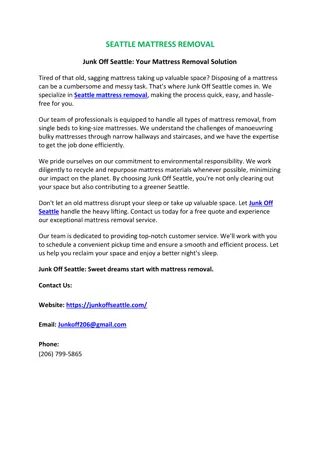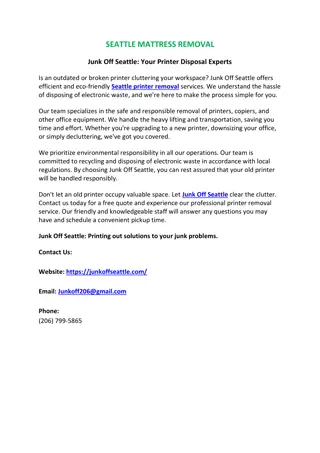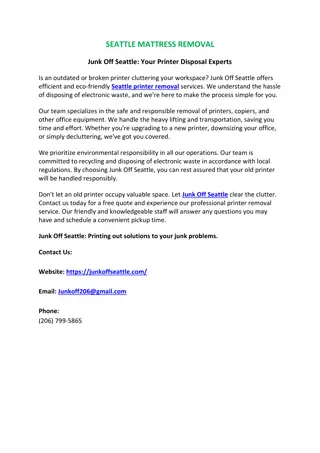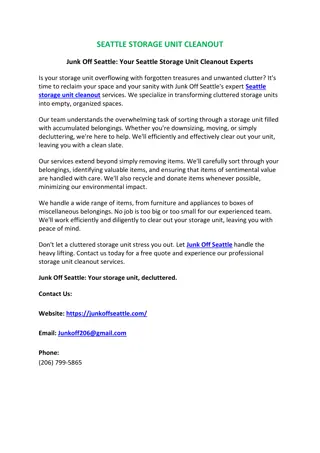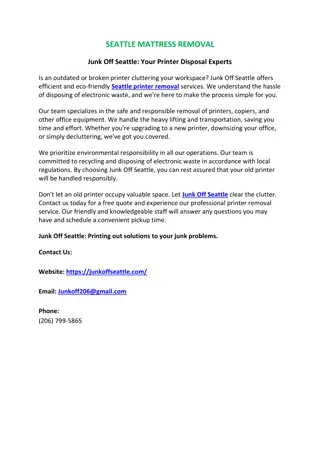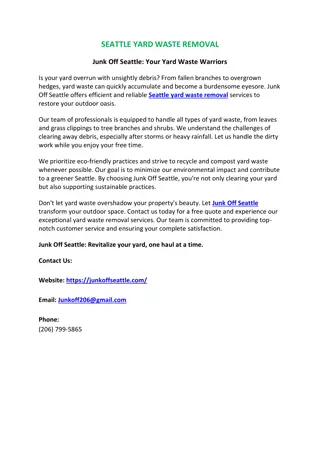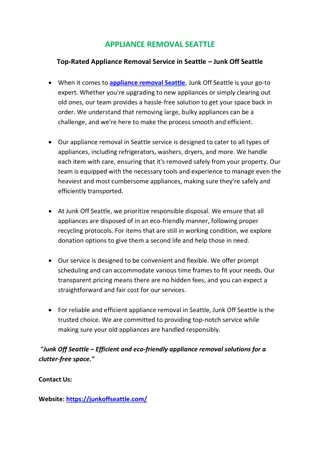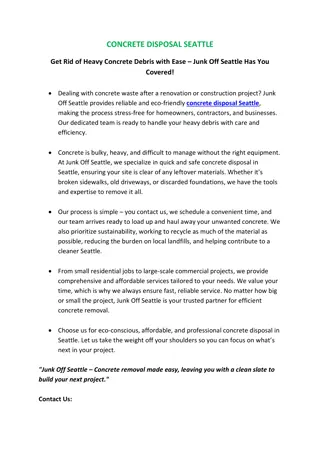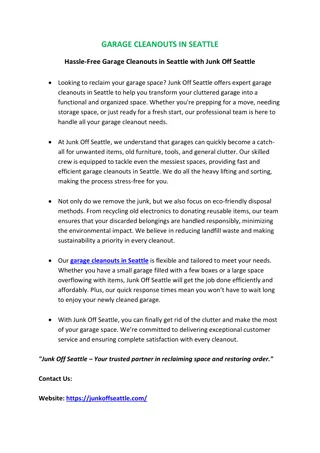Understanding Environmentally Critical Areas Update in Seattle
Seattle's Environmentally Critical Areas Update focuses on protecting key natural areas like aquifers, wetlands, and salmon habitats. The update process involves reviewing regulations, incorporating the Best Available Science, and engaging the public in decision-making. Ongoing efforts ensure compliance with the Growth Management Act and conservation of critical habitats.
Download Presentation

Please find below an Image/Link to download the presentation.
The content on the website is provided AS IS for your information and personal use only. It may not be sold, licensed, or shared on other websites without obtaining consent from the author. Download presentation by click this link. If you encounter any issues during the download, it is possible that the publisher has removed the file from their server.
E N D
Presentation Transcript
Environmentally Critical Areas Update PLUZ Committee November 29, 2016 Maggie Glowacki City of Seattle Department of Construction & Inspections
Presentation Overview 1. What are Environmentally Critical Areas? 2. Requirements for ECA update 3. Best Available Science 4. Summary of identified issues
What are Environmentally Critical Areas? Aquifers Landslide-Prone and Steep Slope Areas Peat bogs Streams/Riparian Corridors Small lakes Wetlands
ECA Background 1990 Washington State s response to rapid growth was the 1990 Growth Management Act (GMA) 1992 GMA-required protection of Environmentally Critical Areas 1995 New requirement to use Best Available Science to protect ECAs with special consideration for protecting anadromous fish (e.g., salmon) 2016 No new requirements; update ECA regulations for clarity and continued compliance with GMA
Requirements for the ECA Update 1.Review regulations for compliance with GMA 2.Best Available Science 3.Public participation plan 4.Develop policies and regulations
Best Available Science RCW 36.70A.172(1) requires best available science to be used in developing policies and regulations to protect functions and values of critical areas. This also requires measures to conserve and protect anadromous fisheries (salmon), including the protection of habitat for all life states of these fish.
Best Available Science Best Available Science Documents - available on SDCI's ECA update website: Best Available Science Review for Fish and Wildlife Habitat Conservation Areas (2013); Best Available Science Review for Wetlands (2014); Best Available Science Review for Geologic Hazard Areas (2014); Best Available Science documents for the 2006 - 2012 ECA amendments; Best Available Science for the City of Sammamish Critical Areas regulations; Department of Community, Trade and Economic Development s Critical Areas Assistance Handbook: Protecting Critical Areas within the Framework of the Washington Growth Management Act (2007); Department of Ecology's Wetland Rating, Delineation, Buffer, Mitigation, and Protecting and Managing documents ( 2005 - 20016).
Priority Species Protection Priority species Bald Eagle Heron Options for compliance Standard Management Plan WA Department of Fish and Wildlife (WDFW) site-specific plan
Proposed Changes Include greater protection for great blue heron based on WDFW s 2012 Priority Habitat and Species guidance for great blue heron. Increase wetland buffers from 85 to 110 feet for Class III wetlands that have moderate to high level habitat value. Replace State Environmental Policy Act (SEPA) review with clear and predictable ECA regulations for certain projects that are exempt from SEPA under Section 25.09.800. Amend the ECA/SEPA Director s Rule to allow vegetation management as a SEPA exempt activity if it meets the SEPA exemption thresholds and ECA regulations.
Proposed Changes Apply standards to achieve better fit in existing neighborhoods in subdivision processes. New houses would be required to meet the single- family lot coverage based on the non-ECA area and regulations include building separation standards. Include a new section that establishes the steps in mitigation sequencing as set out in the 2007 Department of Community, Trade and Economic Development s Critical Areas Assistance Handbook: Protecting Critical Areas within the Framework of the Washington Growth Management Act.
Thank you Margaret.Glowacki@seattle.gov (206) 386-4036













